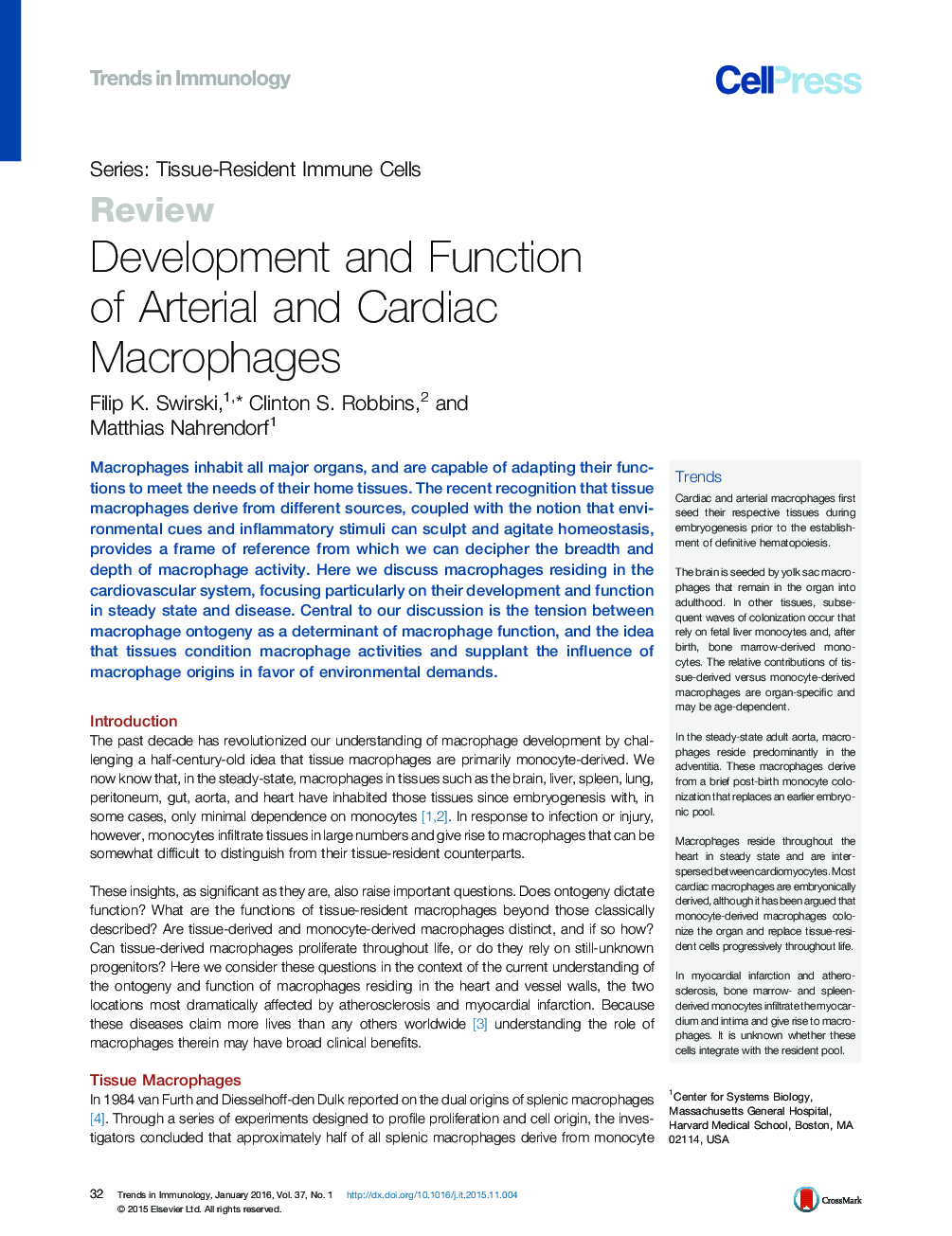| Article ID | Journal | Published Year | Pages | File Type |
|---|---|---|---|---|
| 4359703 | Trends in Immunology | 2016 | 9 Pages |
Macrophages inhabit all major organs, and are capable of adapting their functions to meet the needs of their home tissues. The recent recognition that tissue macrophages derive from different sources, coupled with the notion that environmental cues and inflammatory stimuli can sculpt and agitate homeostasis, provides a frame of reference from which we can decipher the breadth and depth of macrophage activity. Here we discuss macrophages residing in the cardiovascular system, focusing particularly on their development and function in steady state and disease. Central to our discussion is the tension between macrophage ontogeny as a determinant of macrophage function, and the idea that tissues condition macrophage activities and supplant the influence of macrophage origins in favor of environmental demands.
TrendsCardiac and arterial macrophages first seed their respective tissues during embryogenesis prior to the establishment of definitive hematopoiesis.The brain is seeded by yolk sac macrophages that remain in the organ into adulthood. In other tissues, subsequent waves of colonization occur that rely on fetal liver monocytes and, after birth, bone marrow-derived monocytes. The relative contributions of tissue-derived versus monocyte-derived macrophages are organ-specific and may be age-dependent.In the steady-state adult aorta, macrophages reside predominantly in the adventitia. These macrophages derive from a brief post-birth monocyte colonization that replaces an earlier embryonic pool.Macrophages reside throughout the heart in steady state and are interspersed between cardiomyocytes. Most cardiac macrophages are embryonically derived, although it has been argued that monocyte-derived macrophages colonize the organ and replace tissue-resident cells progressively throughout life.In myocardial infarction and atherosclerosis, bone marrow- and spleen-derived monocytes infiltrate the myocardium and intima and give rise to macrophages. It is unknown whether these cells integrate with the resident pool.
